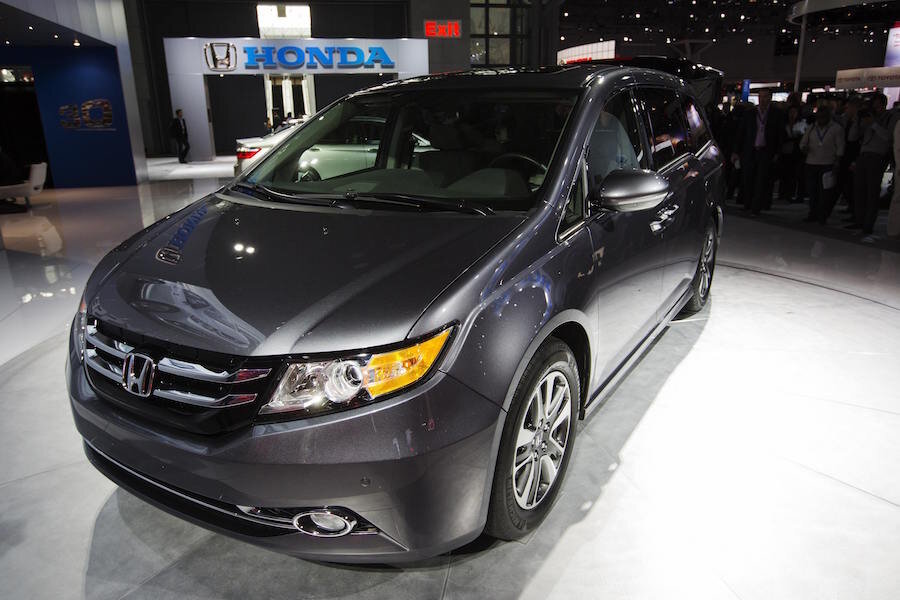These are the 10 cheapest cars to insure
Loading...
You pride yourself on being a smart shopper. When you’re looking for a new — or new-to-you — vehicle, you research features and compare prices to make sure you’re getting the best deal. And you might also want to look up average auto insurance premiums for the cars you’re considering. Rates vary, sometimes significantly, depending on the kind of car you drive.
NerdWallet found the three best-sellers in each of 10 popular vehicle categories, according to Edmunds. Then we crunched the numbers to determine which models were the cheapest to insure.
Cheapest vehicles to insure
AMONG POPULAR MODELS
| RANK | 2016 VEHICLE | AVERAGE ANNUAL INSURANCE PREMIUM | MANUFACTURER'S SUGGESTED RETAIL PRICE | VEHICLE TYPE |
|---|---|---|---|---|
| 1 | Honda Odyssey | $1,015 | $29,400 | Minivan |
| 2 | Dodge Grand Caravan | $1,028 | $22,095 | Minivan |
| 3 | Toyota Tacoma | $1,033 | $23,300 | Compact truck |
| 4 | Honda CR-V | $1,041 | $23,745 | Compact crossover SUV |
| 5 | Ford Escape | $1,044 | $23,600 | Compact crossover SUV |
| 6 | Jeep Cherokee | $1,045 | $23,395 | Midsize crossover SUV |
| 7 | Toyota Highlander | $1,061 | $29,990 | Midsize crossover SUV |
| 8 | Chevy Silverado 1500 | $1,078 | $26,520 | Large truck |
| 9 | Toyota Sienna | $1,084 | $28,850 | Minivan |
| 10 (tie) | Jeep Wrangler | $1,086 | $23,895 | Midsize traditional SUV |
Why car models influence auto insurance rates
It’s simple: Car insurance companies price policies based on the risk you and your vehicle present, so they examine vehicle claim histories to find out which ones have the most accidents and most frequent incidences of car theft. Higher risk means higher car insurance rates.
That’s why vehicles with strong safety features tend to cost less to insure. They hold up well in accidents and are at lower risk for damage and bodily injury claims. And cars with lower horsepower are generally cheaper to insure than sports cars that are designed for speed.
Avoid these vehicles to save on insurance
Owning other types of vehicles — including the following — often drives up car insurance costs:
- High-cost sports cars have some of the highest auto insurance rates. Statistics from the Insurance Institute for Highway Safety show that they’re often driven by younger, riskier drivers and are involved in more accidents, driving up the cost to insure them.
- High-end luxury cars are typically expensive to insure because repairing them can be pricey, and it costs more to replace them if they’re totaled.
- Larger vehicles, such as big SUVs, can have high insurance premiums because of their potential to inflict a greater amount of damage to other vehicles and their occupants in an accident.
- Cars most targeted by thieves also cost more to insure. About one-third of a typical comprehensive auto insurance premium goes to pay for auto theft claims, according to the Insurance Information Institute.
Rates vary quite a bit from company to company, so it’s always a good idea to shop around and compare quotes. NerdWallet’scomparison tool can help. Ask your carrier about discounts, too. Many offer price breaks if your car has features that reduce the risk of injuries or theft.
Think of it this way: You can’t do anything about some auto insurance pricing factors — such as your age, gender or the frequency of accidents where you live — but the car you choose to drive is one factor within your control.
NerdWallet staff writer Alex Glenn contributed to this article.
Juan Castillo is a staff writer at NerdWallet, a personal finance website. Email: jcastillo@nerdwallet.com. Twitter: @JCastilloNerd.
The article appeared first at NerdWallet and was updated. It originally published Feb. 12, 2015.
METHODOLOGY
NerdWallet ran insurance quotes from the largest insurers for 10 ZIP codes in three states: California, Texas and Ohio. We sampled rates for 30-year-old male and female drivers who had policies with liability limits of $100,000 per person, $300,000 per incident and $50,000 in property damage. We included $100,000/$300,000 uninsured motorist coverage, and collision and comprehensive with a $1,000 deductible. Rates shown were averaged from the three lowest quotes per vehicle in each state. These are sample rates generated through Quadrant Information Services. Your own rates will differ.
Vehicles listed in the table were the top sellers in each of 10 popular categories in 2015, according to Edmunds.





